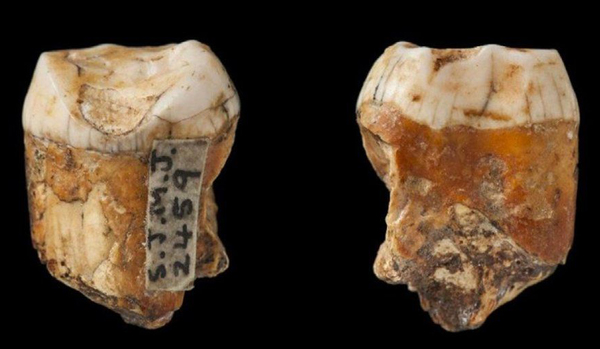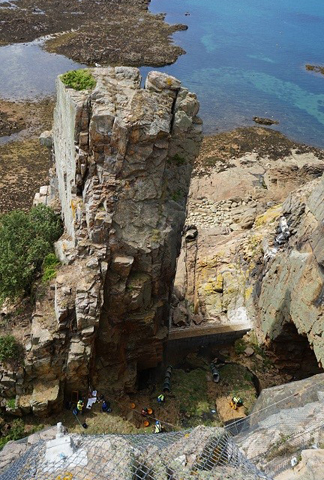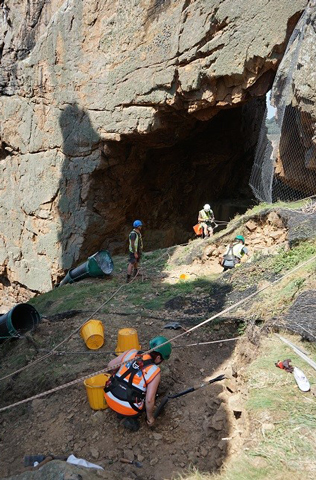Teeth Provide Evidence of H. sapiens and Neanderthal Interbreeding
Teeth estimated to be less than 48,000 years old from a site in Jersey have provided evidence of Homo sapiens and Homo neanderthalensis interbreeding. The collection of thirteen teeth were all found on a ledge behind a hearth at the cave site of La Cotte de St Brelade on the island of Jersey. The teeth which were all collected between 1910 and 1911 were all thought to represent the adult teeth of Neanderthals, however, new research led by the Natural History Museum (London), the University of Wales, the University of Kent, The British Museum, the Max Planck Institute for Evolutionary Anthropology (Leipzig, Germany), Wessex Archaeology and University College London, uncovered features characteristic with modern human teeth (H. sapiens).
Views of One of the Teeth from the La Cotte de St Brelade (Jersey) Site
Picture credit: Journal of Human Evolution
Traits of Both Neanderthal and Modern Human
One of the original teeth had been lost, another was identified as nonhominin, the remainder represent the teeth from at least two adults. The shape of the area between the crown and the root, the cervix, indicated that the teeth were from a Homo sapiens, whilst the crown and root dimensions along with the shape of the roots are consistent with H. neanderthalensis.
Field Team Members at Work on the La Cotte de St Brelade Site
Picture credit: Dr Martin Bates (University of Wales)
This combination of Neanderthal and modern human traits led the research team to conclude that the people who had these teeth had a possible shared Neanderthal and H. sapiens ancestry.
Dating the Cave Deposits
The research team were able to utilise advance sediment dating techniques to determine the approximate age of the teeth. The age of the material three to four metres below the horizon from which the teeth came from dates to about 48,000 years ago, a time when modern human populations and Neanderthals were both present in Europe. A fragmentary skull bone (occipital) found in association with the teeth does not exhibit any diagnostic Neanderthal features, however the teeth provide further, intriguing evidence in support of hominin interbreeding.
Dr Martin Bates, (University of Wales), a geologist on the research team stated:
“The work on the teeth show the value of going back to historic collections of material where modern work at a site provides new contexts for this historic material. So, although the teeth were collected back in the early 20th century, modern techniques applied to both the teeth and the site now allow us to really begin to understand what the teeth represent and how old they are.”
Mapping and Excavating the La Cotte de St Brelade Site
Picture credit: Dr Martin Bates (University of Wales)
Everything Dinosaur acknowledges the assistance of a media release from the University of Wales in the compilation of this article.
The scientific paper: “The morphology of the Late Pleistocene hominin remains from the site of La Cotte de St Brelade, Jersey (Channel Islands)” by Tim Compton, Matthew M. Skinner, Louise Humphrey, Matthew Pope, Martin Bates, Thomas W. Davies, Simon A. Parfitt, William P. Plummer, Beccy Scott, Andrew Shaw and Chris Stringer published in the Journal of Human Evolution.
Visit the Everything Dinosaur website: Everything Dinosaur.









Leave A Comment